Description
solutions manual Horngren’s Accounting Nobles Mattison Matsumur 10th edition
Delivery is INSTANT. You can download the files IMMEDIATELY once payment is done
If you have any questions, or would like a receive a sample chapter before your purchase, please contact us at inquiry@testbankcorp.com
Table of Contents
1. Accounting and the Business Environment
2. Recording Business Transactions
3. The Adjusting Process
4. Completing the Accounting Cycle
5. Merchandising Operations
6. Merchandise Inventory
7. Accounting Information Systems
8. Internal Control and Cash
9. Receivables
10. Plant Assets, Natural Resources, and Intangibles
11. Current Liabilities and Payroll
12. Partnerships
13. Corporations
14. Long-Term Liabilities
15. Investments
16. The Statement of Cash Flows
17. Financial Statement Analysis
18. Introduction to Managerial Accounting
19. Job Order Costing
20. Process Costing
21. Cost-Volume-Profit Analysis
22. Master Budgets
23. Flexible Budgets and Standard Cost Systems
24. Cost Allocation and Responsibility Accounting
25. Short-Term Business Decisions
26. Capital Investments Decisions
Please note that the files are compressed using the program Winzip.
Files ending with the extension (.pdf) can be opened using Adobe Acrobat Reader.
Chapter 1
Accounting and the Business Environment
Review Questions
1. Accounting is the information system that measures business activities, processes the information into reports, and communicates the results to decision makers. Accounting is the language of business.
2. Financial accounting provides information for external decision makers, such as outside investors, lenders, customers, and the federal government. Managerial accounting focuses on information for internal decision makers, such as the company’s managers and employees.
3. Individuals use accounting information to help them manage their money, evaluate a new job, and better decide whether they can afford to make a new purchase. Business owners use accounting information to set goals, measure progress toward those goals, and make adjustments when needed. Investors use accounting information to help them decide whether or not a company is a good investment and once they have invested, they use a company’s financial statements to analyze how their investment is performing. Creditors use accounting information to decide whether to lend money to a business and to evaluate a company’s ability to make the loan payments. Taxing authorities use accounting information to calculate the amount of income tax that a company has to pay.
4. Certified Public Accountants (CPAs) are licensed professional accountants who serve the general public. They work for public accounting firms, businesses, government, or educational institutions. To be certified they must meet educational and/or experience requirements and pass an exam. Certified Management Accountants (CMAs) specialize in accounting and financial management knowledge. They work for a single company.
5. The FASB oversees the creation and governance of accounting standards. They work with governmental regulatory agencies, congressionally created groups, and private groups.
6. The guidelines for accounting information are called GAAP. It is the main U.S. accounting rule book and is currently created and governed by the FASB. Investors and lenders must have information that is relevant and has faithful representation in order to make decisions and the GAAP provides the framework for this financial reporting.
7. A sole proprietorship has a single owner, terminates upon the owner’s death or choice, the owner has personal liability for the business’s debts, and it is not a separate tax entity. A partnership has two or more owners, terminates at partner’s choice or death, the partners have personal liability, and it is not a separate tax entity. A corporation is a separate legal entity, has one or more owners, has indefinite life, the stockholders are not personally liable for the business’s debts, and it is a separate tax entity. A limited-liability company has one or more members and each is only liable for his or her own actions, has an indefinite life, and is not a separate tax entity.
8. The land should be recorded at $5,000. The cost principle states that assets should be recorded at their historical cost.
9. The going concern assumption assumes that the entity will remain in business for the foreseeable future and long enough to use existing resources for their intended purpose.
10. The faithful representation concept states that accounting information should be complete, neutral, and free from material error.
11. The monetary unit assumption states that items on the financial statements should be measured in terms of a monetary unit.
12. The IASB is the organization that develops and creates IFRS which are a set of global accounting standards that would be used around the world.
13. Assets = Liabilities + Equity. Assets are economic resources that are expected to benefit the business in the future. They are things of value that a business owns or has control of. Liabilities are debts that are owed to creditors. They are one source of claims against assets. Equity is the other source of claims against assets. Equity is the owner’s claim against assets and is the amount of assets that is left over after the company has paid its liabilities. It represents the net worth of the company.
14. Equity increases with owner contributions and revenues. Equity decreases with expenses and owner withdrawals.
15. Revenues – Expenses = Net Income. Revenues are earnings resulting from delivering goods or services to customers. Expenses are the cost of selling goods or service.
16. Step 1: Identify the accounts and the account type. Step 2: Decide if each account increases or decreases. Step 3: Determine if the accounting equation is in balance.
17. Income Statement – Shows the difference between an entity’s revenues and expenses and reports the net income or net loss for a specific period.
Statement of Owner’s Equity – Shows the changes in the owner’s capital account for a specific period.
Balance Sheet – Shows the assets, liabilities, and owner’s equity of the business as of a specific date.
Statement of Cash Flows – Shows a business’s cash receipts and cash payments for a specific period.
18. Return on Assets = Net income / Average total assets. ROA measures how profitably a company uses its assets.

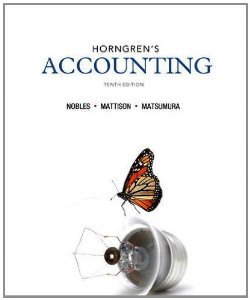
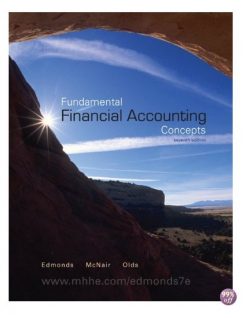
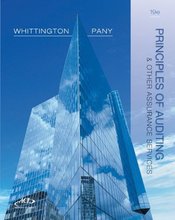
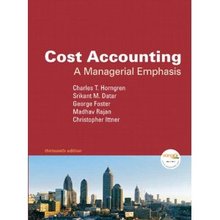
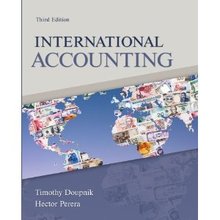

Reviews
There are no reviews yet.